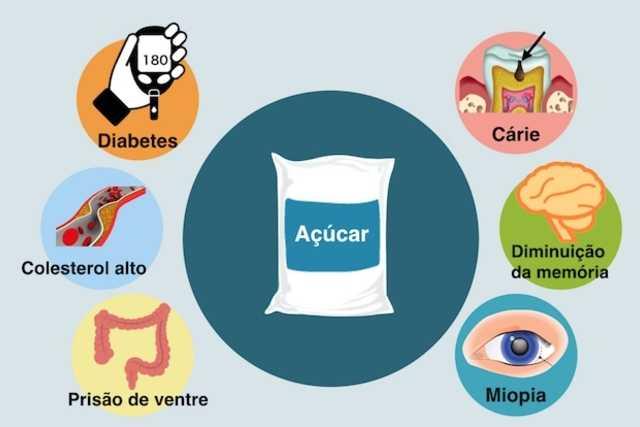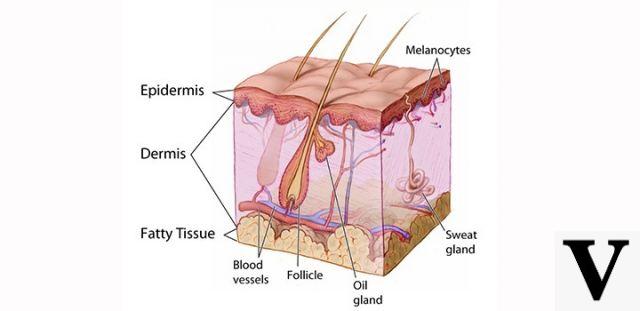
Three classic experiments show us how stereotypes influence our behavior without our realizing it. Regardless of their bad reputation, stereotypes can sometimes be of great help by offering us condensed information when we don't have much time to decide. . However, in the majority of cases they have negative effects, they turn into rigid schemes that only serve to label and denigrate other people.I would say that a good percentage of all the inhabitants of the earth have their own stereotypes positioned in the meanders of the brain that happen to emerge. only when a complex situation arises that deserves to be investigated in order to be judged, but… is it possible to avoid thinking in a stereotyped way? Can we prevent our stereotypes from activating? How is it possible to spot a stereotype if many times one does not even realize its presence? These were some of the questions that inspired Bargh's studies. In one of his first experiments the 34 participants were divided into three groups. Each group was assigned (without their realizing it) a status: toughness, kindness, or none. The manipulation to achieve these states was done without people suspecting anything. How? In a very simple way, the researchers proposed a play on words that referred to harshness as: "annoying", "intrusive" ... or to amiability as: "courtesy", "patience" ... The third group completed a game with meaningful words Once the task was completed, the volunteers had to continue the experiment in another place, when "by chance" the experimenter was involved in a deep conversation with another person, this interruption would force the volunteers to wait for Of course, this was a controlled situation, the researchers wanted to know how many people could interrupt them if the experimenter kept talking for another ten minutes without paying any attention to them.As you can imagine, only 18% of the people who were part of the group that organized the play on words related to amiability interrupted the conversation, while the group subjected to Hardness priming increased the dropout rate to 64%. People in the neutral group cut off the conversation by 36%. Needless to say, although predictable, the results do not fail to surprise us. How is it possible that people can change their behavior so much after just one priming session? One group turned into harsh and annoyed people only after reading 15 words that activated the concept of toughness in their minds. It's surprising enough that so little is needed to manipulate our behavior. But let's leave the comments pending and move on to the second experiment. In this case, the researchers focused their attention on the stereotype of age. They used the same previous trick as puns to create a priming in the 30 volunteer participants. Two groups were formed, in one of them the representation of the elderly person was activated through words such as: "slow", "defenseless" ... in the other neutral words were used. This time the researchers wondered how fast the participants could walk a corridor of 9,75 meters in length. Will it be possible that reading words related to old age and the slowness that accompanies its movements can really make us slower? While the answer is incredible, yes. People whose old age stereotypes were activated walked much slower than the rest of the participants. At the end, each participant was asked if they noticed any relationship between the puns and what happened next. Only one of them answered affirmatively. At this point in the third experiment the researchers changed their method by applying manipulation in a totally subliminal form. In this case the 41 participants (all white Caucasians) were asked to complete a monotonous game on the computer. As people completed the game, images of white or African-American (black) youths appeared on the screen at such a speed that none of the participants could consciously discriminate against them.At the end of the game, the researchers told the participants that due to a technical problem the results of the games played on the pc were not saved, for this reason they would have to redo the game again. As you can imagine, upon hearing the news, people were not very happy, and this feeling of annoyance could be clearly seen in the first facial microexpressions. Immediately after this first frustrated facial reaction, the researchers said it was their mistake and they shouldn't have played the game again. What reaction did these people have? The results show that people who were exposed to images of young white faces showed a reaction of anger and aggression at level 2 (on a scale of 0 to 10), while people who were exposed to images of colored (black) youth faces showed a level of 3. When they were subjected to questionnaires evaluating their racist attitude it could be observed that those who saw the images of white faces felt less racist. The researchers concluded that the incorrect identification between ethnicity and aggression resulted in more aggressive responses in people, however, of the three tests described, the latter is the one that convinces me the least. There really isn't a big difference between the score of 2 and that of 3. Furthermore, analyzing facial microexpressions leaves a lot of room for the researcher's expectation and subjectivity.But in addition to the legitimate criticisms that anyone can make, it is certain that these studies show us how sensitive our behaviors are in the face of even the slightest variation in the environment. surrounding. Probably the saddest part lies in the fact that our stereotypes often affect us unconsciously (a fact I have already talked about in the article: “Daily self-deception”), which is why it will be increasingly difficult for us to control them.
 Three classic experiments show us how stereotypes influence our behavior without our realizing it. Regardless of their bad reputation, stereotypes can sometimes be of great help by offering us condensed information when we don't have much time to decide. . However, in the majority of cases they have negative effects, they turn into rigid schemes that only serve to label and denigrate other people.I would say that a good percentage of all the inhabitants of the earth have their own stereotypes positioned in the meanders of the brain that happen to emerge. only when a complex situation arises that deserves to be investigated in order to be judged, but… is it possible to avoid thinking in a stereotyped way? Can we prevent our stereotypes from activating? How is it possible to spot a stereotype if many times one does not even realize its presence? These were some of the questions that inspired Bargh's studies. In one of his first experiments the 34 participants were divided into three groups. Each group was assigned (without their realizing it) a status: toughness, kindness, or none. The manipulation to achieve these states was done without people suspecting anything. How? In a very simple way, the researchers proposed a play on words that referred to harshness as: "annoying", "intrusive" ... or to amiability as: "courtesy", "patience" ... The third group completed a game with meaningful words Once the task was completed, the volunteers had to continue the experiment in another place, when "by chance" the experimenter was involved in a deep conversation with another person, this interruption would force the volunteers to wait for Of course, this was a controlled situation, the researchers wanted to know how many people could interrupt them if the experimenter kept talking for another ten minutes without paying any attention to them.As you can imagine, only 18% of the people who were part of the group that organized the play on words related to amiability interrupted the conversation, while the group subjected to Hardness priming increased the dropout rate to 64%. People in the neutral group cut off the conversation by 36%. Needless to say, although predictable, the results do not fail to surprise us. How is it possible that people can change their behavior so much after just one priming session? One group turned into harsh and annoyed people only after reading 15 words that activated the concept of toughness in their minds. It's surprising enough that so little is needed to manipulate our behavior. But let's leave the comments pending and move on to the second experiment. In this case, the researchers focused their attention on the stereotype of age. They used the same previous trick as puns to create a priming in the 30 volunteer participants. Two groups were formed, in one of them the representation of the elderly person was activated through words such as: "slow", "defenseless" ... in the other neutral words were used. This time the researchers wondered how fast the participants could walk a corridor of 9,75 meters in length. Will it be possible that reading words related to old age and the slowness that accompanies its movements can really make us slower? While the answer is incredible, yes. People whose old age stereotypes were activated walked much slower than the rest of the participants. At the end, each participant was asked if they noticed any relationship between the puns and what happened next. Only one of them answered affirmatively. At this point in the third experiment the researchers changed their method by applying manipulation in a totally subliminal form. In this case the 41 participants (all white Caucasians) were asked to complete a monotonous game on the computer. As people completed the game, images of white or African-American (black) youths appeared on the screen at such a speed that none of the participants could consciously discriminate against them.At the end of the game, the researchers told the participants that due to a technical problem the results of the games played on the pc were not saved, for this reason they would have to redo the game again. As you can imagine, upon hearing the news, people were not very happy, and this feeling of annoyance could be clearly seen in the first facial microexpressions. Immediately after this first frustrated facial reaction, the researchers said it was their mistake and they shouldn't have played the game again. What reaction did these people have? The results show that people who were exposed to images of young white faces showed a reaction of anger and aggression at level 2 (on a scale of 0 to 10), while people who were exposed to images of colored (black) youth faces showed a level of 3. When they were subjected to questionnaires evaluating their racist attitude it could be observed that those who saw the images of white faces felt less racist. The researchers concluded that the incorrect identification between ethnicity and aggression resulted in more aggressive responses in people, however, of the three tests described, the latter is the one that convinces me the least. There really isn't a big difference between the score of 2 and that of 3. Furthermore, analyzing facial microexpressions leaves a lot of room for the researcher's expectation and subjectivity.But in addition to the legitimate criticisms that anyone can make, it is certain that these studies show us how sensitive our behaviors are in the face of even the slightest variation in the environment. surrounding. Probably the saddest part lies in the fact that our stereotypes often affect us unconsciously (a fact I have already talked about in the article: “Daily self-deception”), which is why it will be increasingly difficult for us to control them.
Three classic experiments show us how stereotypes influence our behavior without our realizing it. Regardless of their bad reputation, stereotypes can sometimes be of great help by offering us condensed information when we don't have much time to decide. . However, in the majority of cases they have negative effects, they turn into rigid schemes that only serve to label and denigrate other people.I would say that a good percentage of all the inhabitants of the earth have their own stereotypes positioned in the meanders of the brain that happen to emerge. only when a complex situation arises that deserves to be investigated in order to be judged, but… is it possible to avoid thinking in a stereotyped way? Can we prevent our stereotypes from activating? How is it possible to spot a stereotype if many times one does not even realize its presence? These were some of the questions that inspired Bargh's studies. In one of his first experiments the 34 participants were divided into three groups. Each group was assigned (without their realizing it) a status: toughness, kindness, or none. The manipulation to achieve these states was done without people suspecting anything. How? In a very simple way, the researchers proposed a play on words that referred to harshness as: "annoying", "intrusive" ... or to amiability as: "courtesy", "patience" ... The third group completed a game with meaningful words Once the task was completed, the volunteers had to continue the experiment in another place, when "by chance" the experimenter was involved in a deep conversation with another person, this interruption would force the volunteers to wait for Of course, this was a controlled situation, the researchers wanted to know how many people could interrupt them if the experimenter kept talking for another ten minutes without paying any attention to them.As you can imagine, only 18% of the people who were part of the group that organized the play on words related to amiability interrupted the conversation, while the group subjected to Hardness priming increased the dropout rate to 64%. People in the neutral group cut off the conversation by 36%. Needless to say, although predictable, the results do not fail to surprise us. How is it possible that people can change their behavior so much after just one priming session? One group turned into harsh and annoyed people only after reading 15 words that activated the concept of toughness in their minds. It's surprising enough that so little is needed to manipulate our behavior. But let's leave the comments pending and move on to the second experiment. In this case, the researchers focused their attention on the stereotype of age. They used the same previous trick as puns to create a priming in the 30 volunteer participants. Two groups were formed, in one of them the representation of the elderly person was activated through words such as: "slow", "defenseless" ... in the other neutral words were used. This time the researchers wondered how fast the participants could walk a corridor of 9,75 meters in length. Will it be possible that reading words related to old age and the slowness that accompanies its movements can really make us slower? While the answer is incredible, yes. People whose old age stereotypes were activated walked much slower than the rest of the participants. At the end, each participant was asked if they noticed any relationship between the puns and what happened next. Only one of them answered affirmatively. At this point in the third experiment the researchers changed their method by applying manipulation in a totally subliminal form. In this case the 41 participants (all white Caucasians) were asked to complete a monotonous game on the computer. As people completed the game, images of white or African-American (black) youths appeared on the screen at such a speed that none of the participants could consciously discriminate against them.At the end of the game, the researchers told the participants that due to a technical problem the results of the games played on the pc were not saved, for this reason they would have to redo the game again. As you can imagine, upon hearing the news, people were not very happy, and this feeling of annoyance could be clearly seen in the first facial microexpressions. Immediately after this first frustrated facial reaction, the researchers said it was their mistake and they shouldn't have played the game again. What reaction did these people have? The results show that people who were exposed to images of young white faces showed a reaction of anger and aggression at level 2 (on a scale of 0 to 10), while people who were exposed to images of colored (black) youth faces showed a level of 3. When they were subjected to questionnaires evaluating their racist attitude it could be observed that those who saw the images of white faces felt less racist. The researchers concluded that the incorrect identification between ethnicity and aggression resulted in more aggressive responses in people, however, of the three tests described, the latter is the one that convinces me the least. There really isn't a big difference between the score of 2 and that of 3. Furthermore, analyzing facial microexpressions leaves a lot of room for the researcher's expectation and subjectivity.But in addition to the legitimate criticisms that anyone can make, it is certain that these studies show us how sensitive our behaviors are in the face of even the slightest variation in the environment. surrounding. Probably the saddest part lies in the fact that our stereotypes often affect us unconsciously (a fact I have already talked about in the article: “Daily self-deception”), which is why it will be increasingly difficult for us to control them. 

























